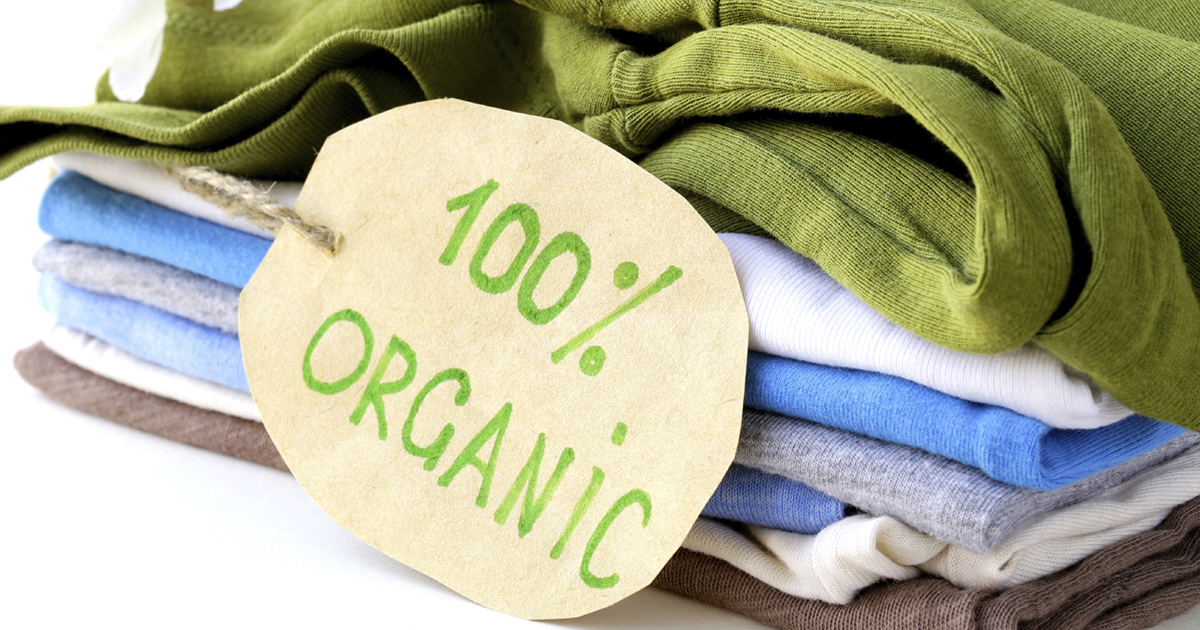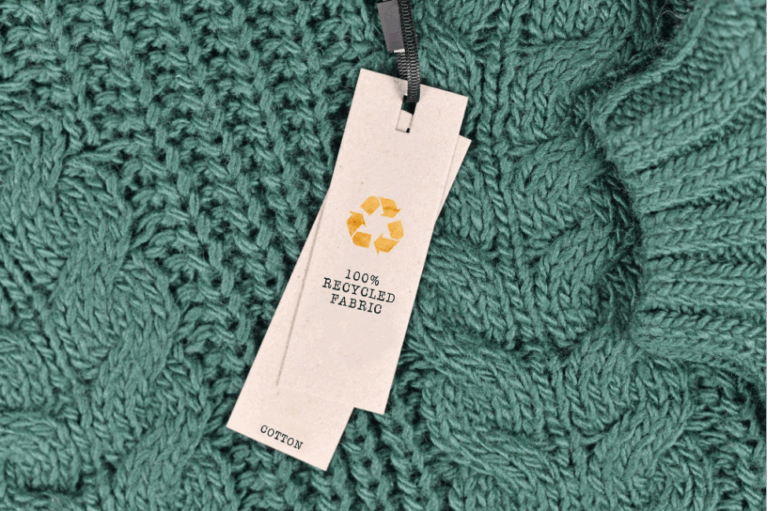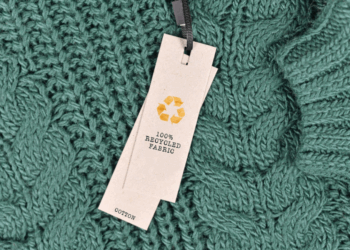In an era increasingly defined by both environmental urgency and a heightened sense of social responsibility, a powerful new force is emerging in the global marketplace: Sustainable Youth Brands. These pioneering ventures, often founded and led by young entrepreneurs, are not just creating products or services; they are building movements that prioritize ecological integrity, ethical practices, and positive societal impact alongside profit. Driven by a deep personal conviction and an innate understanding of digital communication, these brands are challenging traditional consumerism, fostering conscious consumption, and demonstrating that profitability and purpose can indeed coexist. This comprehensive article delves into the transformative phenomenon of sustainable youth brands, exploring the core motivations behind their emergence, the distinct advantages they leverage, the significant challenges they navigate, and the profound influence they are exerting on both the economy and the planet. Understanding and championing this vibrant segment is paramount for fostering a truly sustainable and equitable future for all.
Why Youth Lead Sustainable Brands

The rise of sustainable brands spearheaded by young individuals is a direct response to a unique confluence of factors that have shaped their worldview and entrepreneurial drive.
A. Inherited Environmental Crisis and Urgent Awareness: This generation has grown up immersed in information about climate change, plastic pollution, biodiversity loss, and resource depletion. They are acutely aware of the environmental challenges inherited from previous generations and feel a profound sense of urgency and personal responsibility to address them. This direct exposure to the crisis fuels their desire to be part of the solution.
B. Digital Fluency and Global Connectivity: As digital natives, young founders effortlessly navigate the online world, which enables them to:
1. Access Information and Research: They can readily research sustainable materials, ethical supply chains, environmental science, and best practices. This allows them to build informed and credible sustainable brands.
2. Global Collaboration and Sourcing: They can connect with ethical suppliers, sustainable manufacturers, and like-minded partners across the globe, transcending geographical limitations.
3. Amplify Messages and Build Community: Social media and digital platforms provide powerful tools to educate consumers, tell authentic brand stories, and mobilize communities around shared environmental values.
C. Ethical Consumption as a Core Value: This generation, particularly Gen Z and younger millennials, places a high premium on authenticity, transparency, and ethical practices in their purchasing decisions. They are not just buying products; they are buying into values.
1. Values-Aligned Purchasing: They actively seek out brands that align with their personal ethics, supporting companies that prioritize environmental protection, fair labor, and social justice.
2. Rejection of “Greenwashing”: They are highly discerning and skeptical of brands that make vague environmental claims without genuine commitment, pushing for true transparency and accountability.
3. Desire for Impact: They want their consumption to have a positive impact, making sustainable brands a natural choice for both their purchases and their entrepreneurial endeavors.
D. Disillusionment with Corporate Inaction: Many young people express frustration with the perceived slow pace of change and insufficient action from large corporations and governments regarding sustainability. This often motivates them to create their own solutions and businesses that embody the change they wish to see. They believe in demonstrating change through action.
E. Inspiration from Conscious Innovators: The visibility of successful ethical brands and eco-entrepreneurs, often highlighted through digital media, provides tangible proof that sustainable business models can be financially viable and impactful. These role models empower young founders to take the leap.
Distinct Advantages of The Youthful Sustainable
Sustainable youth brands possess unique strengths that give them a powerful competitive edge in the evolving consumer market and position them as leaders in the green economy.
A. Authenticity and Relatability:
1. Genuine Passion: Their founders’ deep personal commitment to sustainability shines through, creating a level of authenticity that resonates deeply with conscious consumers. This is not a marketing tactic; it’s ingrained in their DNA.
2. Direct Connection: They often foster direct, personal relationships with their customers through social media, sharing their journey, challenges, and successes, which builds immense trust and loyalty.
3. Values-Driven Narrative: Their brand stories are often compelling and values-driven, appealing to consumers who want to feel good about their purchases.
B. Innate Digital Marketing and Storytelling Prowess:
1. Social Media Mastery: They instinctively understand how to leverage platforms like Instagram, TikTok, and YouTube to tell their sustainability stories through engaging visuals, short-form video, and authentic behind-the-scenes content.
2. Influencer Collaborations (Authentic): They often partner with micro-influencers and creators who genuinely align with their eco-values, leading to more credible and effective promotions.
3. Content for Education: They excel at creating informative content that educates consumers on complex environmental issues and the sustainable benefits of their products in an accessible way.
C. Agility and Rapid Adaptation:
1. Lean Operations: Many start with minimal overhead, leveraging digital tools and flexible supply chains, allowing them to pivot quickly in response to new environmental insights or market trends.
2. Fast Iteration: They can rapidly test new sustainable materials, packaging solutions, or circular business models, implementing changes much faster than larger, more entrenched corporations.
3. Responsive to New Research: They are quick to integrate the latest scientific findings or sustainable innovations into their product development.
D. Community Building and Advocacy:
1. Engaged Communities: They naturally attract and build highly engaged online communities of like-minded individuals who become brand advocates, providing feedback, and spreading the message.
2. Collective Impact: These brands often inspire their communities to adopt more sustainable lifestyles, extending their impact beyond product sales.
3. Collaborative Spirit: They are often open to collaborating with other sustainable brands, NGOs, or activists to amplify their collective impact.
E. Innovative Business Models:
1. Circular Economy Focus: Many are pioneers in implementing circular models like product-as-a-service (e.g., rental fashion), repair programs, refill stations, and take-back schemes for end-of-life products.
2. Ethical Supply Chains: They actively pursue transparent and fair supply chains, from sourcing raw materials to manufacturing processes, often prioritizing local or fair-trade suppliers.
3. Impact Measurement: They are often proactive in measuring and reporting their environmental and social impact, providing tangible proof of their commitment.
Challenges for Sustainable Youth Brands
Despite their passion and ingenuity, sustainable youth brands face specific hurdles that require resilience, strategic thinking, and a commitment to overcoming complex operational and market barriers.
A. Higher Initial Costs for Sustainable Sourcing and Production: Ethical and sustainable materials, fair labor practices, and eco-friendly manufacturing processes often come with a higher price tag than conventional, less responsible alternatives. This can impact profit margins or require higher retail prices.
- Strategies for Cost Management:
- Scale Gradually: Start with a niche market and small batch production to test demand and optimize processes before committing to larger volumes.
- Direct Sourcing/Relationships: Build direct relationships with ethical suppliers to potentially reduce intermediary costs and ensure transparency.
- Educate Consumers on Value: Clearly communicate the superior value, durability, and ethical benefits of your products to justify a higher price point.
- Explore Grants/Impact Funding: Seek out grants, impact investors, or crowdfunding campaigns specifically for sustainable ventures, which can provide non-dilutive or patient capital.
- Optimize Logistics: Find sustainable shipping and packaging solutions that minimize both environmental impact and cost where possible.
B. Building Credibility and Avoiding “Greenwashing” Accusations: In a market increasingly wary of superficial environmental claims, establishing genuine credibility and avoiding accusations of “greenwashing” (misleading consumers about environmental practices) is paramount but challenging.
- Establishing Trust and Transparency:
- Third-Party Certifications: Obtain recognized environmental certifications (e.g., B Corp, GOTS, Cradle to Cradle) to validate your claims objectively.
- Radical Transparency: Be open and honest about your supply chain, materials, production processes, and even your challenges. Share your sustainability journey, not just the polished outcome.
- Quantify Impact: Provide measurable data on your environmental and social impact (e.g., carbon footprint reduction, waste diverted, fair wages paid).
- Avoid Vague Claims: Use precise language and avoid generic terms like “eco-friendly” without specific, verifiable details.
- Show, Don’t Just Tell: Use visuals and stories to demonstrate your sustainable practices in action.
C. Navigating Complex Supply Chains and Logistics: Sourcing sustainable materials, ensuring ethical labor practices across a global supply chain, and managing reverse logistics for circular models (e.g., returns for reuse/recycling) add layers of complexity.
- Streamlining Sustainable Supply Chains:
- Thorough Vetting: Conduct rigorous due diligence on all suppliers to ensure their environmental and social compliance.
- Local Sourcing: Prioritize local and regional sourcing where feasible to reduce transportation emissions and support local economies.
- Circular Logistics: Design your supply chain with end-of-life solutions in mind, facilitating product take-back, repair, and recycling programs.
- Blockchain for Transparency: Explore using blockchain technology to create transparent and traceable supply chains.
- Lean Inventory Management: Minimize waste by optimizing inventory levels through accurate demand forecasting.
D. Educating the Consumer Base and Shifting Mindsets: While awareness is growing, many consumers still lack a deep understanding of sustainability nuances, requiring brands to invest in educating their audience about the benefits and “why” behind their practices.
- Effective Consumer Education:
- Content Marketing: Create engaging and informative content (blogs, videos, infographics, social media posts) that breaks down complex environmental concepts and explains your product’s sustainable attributes.
- Clear Product Messaging: Use simple, direct language on product labels, websites, and packaging to highlight sustainable features.
- Impact Stories: Share stories about the positive impact your brand is making, connecting with consumers on an emotional level.
- Interactive Tools: Develop quizzes or calculators that help consumers understand their environmental footprint or the benefits of sustainable choices.
E. Scaling Sustainably Without Compromise: Growing a sustainable brand can be challenging as increased production often puts pressure on resource consumption, waste generation, and maintaining ethical oversight in larger operations.
- Strategic Sustainable Scaling:
- Growth Mindset with Limits: Plan for growth that respects planetary boundaries and resource availability.
- Invest in Green Technology: As you grow, allocate profits towards more energy-efficient machinery, renewable energy sources for operations, or advanced waste management systems.
- Circular Design for Scale: Design products that are inherently durable, repairable, and recyclable at larger volumes.
- Automate Ethical Vetting: Implement systems for continuously monitoring supplier compliance as your network expands.
- Transparent Reporting of Progress: Continue to publicly report on your sustainability performance and challenges as you scale.
Where Sustainable Youth Brands Thrive
Sustainable youth brands are not confined to a single niche; their influence is expanding across diverse sectors, proving that profitability and environmental responsibility can be integrated into virtually any business model.
A. Ethical Fashion and Textiles:
1. Sustainable Apparel: Brands creating clothing from organic cotton, recycled materials (e.g., ocean plastic), hemp, or innovative bio-based fabrics.
2. Circular Fashion: Initiatives focused on clothing rental, repair services, upcycling old garments, or take-back programs for recycling.
3. Fair Trade and Artisan Support: Brands ensuring fair wages and safe working conditions for garment workers, often supporting traditional crafts.
B. Eco-Friendly Consumer Goods:
1. Zero-Waste Products: Offering package-free toiletries, reusable household items, solid cosmetics, and refillable cleaning solutions.
2. Natural and Non-Toxic Alternatives: Creating products free from harmful chemicals, parabens, or synthetic fragrances (e.g., natural skincare, biodegradable cleaning agents).
3. Sustainable Packaging: Innovating with compostable, recyclable, or reusable packaging materials to reduce plastic waste.
C. Plant-Based Food and Sustainable Agriculture:
1. Plant-Based Alternatives: Brands developing delicious and sustainable alternatives to meat, dairy, and eggs.
2. Local and Organic Produce Delivery: Ventures connecting consumers directly with local farmers practicing sustainable agriculture.
3. Food Waste Solutions: Companies creating products from rescued “ugly” produce or developing technologies to reduce food waste in supply chains.
D. Sustainable Technology and Innovation:
1. Green Energy Solutions: Initiatives promoting residential solar, smart home energy management, or community renewable energy projects.
2. Eco-Friendly Tech Accessories: Brands creating phone cases, chargers, or other electronics accessories from recycled or sustainable materials.
3. Sustainable Software/Platforms: Developing digital tools that promote sustainable living, track environmental impact, or facilitate green choices.
E. Conscious Travel and Experiences:
1. Eco-Tourism Ventures: Offering responsible travel experiences that minimize environmental impact and support local communities.
2. Sustainable Accommodation Platforms: Curating and promoting hotels or rentals that adhere to strict environmental standards.
The Broader Influence for Business and Society
The collective impact of sustainable youth brands extends far beyond their individual product offerings, influencing global markets, corporate behavior, and societal values.
A. Accelerating Mainstream Sustainability: Their success demonstrates that there is a viable and growing market for sustainable products, pushing larger corporations to integrate more responsible practices into their own operations.
B. Driving Innovation in Materials and Processes: The demand for truly sustainable solutions spurs research and development in biodegradable materials, clean manufacturing techniques, and circular economy models across industries.
C. Shifting Consumer Expectations and Preferences: By offering compelling and authentic sustainable alternatives, these brands are raising consumer expectations for all products, making environmental and social responsibility a key purchasing factor.
D. Job Creation in the Green Economy: As they grow, sustainable youth brands create new employment opportunities in green jobs, fostering skills in sustainable design, ethical sourcing, and environmental impact management.
E. Empowering Conscious Entrepreneurship: Their success stories inspire other young individuals to pursue entrepreneurship with a purpose-driven mindset, leading to a ripple effect of innovation for good.
Fostering the Green Innovators of Tomorrow
To ensure the continued boom and broader influence of sustainable youth brands, a robust support system involving various stakeholders is crucial.
A. Education Focused on Sustainable Business:
1. Integrated Curricula: Incorporate sustainable business principles, circular economy models, and ethical supply chain management into entrepreneurship programs and even general education.
2. Practical Workshops: Offer hands-on training in sustainable product design, eco-marketing, and impact measurement.
3. Mentorship from Green Entrepreneurs: Connect aspiring founders with experienced leaders in the sustainable business sector.
B. Accessible Funding and Impact Investment:
1. Dedicated Green Funds: Create specialized venture capital funds, angel networks, and micro-loan programs specifically for sustainable startups, recognizing their unique long-term value.
2. Grants and Competitions: Provide non-dilutive funding opportunities through environmental grants, social impact competitions, and university-based programs.
3. Blended Finance Models: Explore innovative financing solutions that combine traditional investment with philanthropic capital for high-impact, potentially slower-return, ventures.
C. Supportive Ecosystems and Networks:
1. Green Business Incubators/Accelerators: Establish programs that offer tailored mentorship, resources, and community specifically for sustainable ventures.
2. Collaborative Platforms: Create networks and forums where sustainable brands can share best practices, collaborate on supply chains, and overcome challenges together.
3. Industry Partnerships: Encourage partnerships between sustainable youth brands and larger corporations for scaling, distribution, or technology transfer.
D. Enabling Regulatory Environments:
1. Incentives for Sustainability: Governments should offer tax breaks, subsidies, or certifications that reward businesses for adopting sustainable practices.
2. Clearer Standards and Labeling: Develop standardized, easy-to-understand environmental labeling systems to help consumers make informed choices and combat greenwashing.
3. Circular Economy Policies: Implement policies that support waste reduction, recycling infrastructure, and product stewardship programs.
E. Consumer Awareness and Advocacy:
1. Public Education Campaigns: Support campaigns that educate consumers on the importance of sustainable consumption and the impact of their choices.
2. Highlight Success Stories: Amplify the narratives of successful sustainable youth brands through media and public platforms to inspire broader consumer and entrepreneurial adoption.
3. Responsible Consumption Habits: Encourage consumers to embrace practices like buying less, repairing more, and supporting ethical producers.
Conclusion
The era of sustainable youth brands is not merely a passing phase; it is a powerful and necessary evolution in how businesses operate and contribute to the world. These vibrant ventures, fueled by passion, purpose, and ingenuity, are proving that financial success and environmental responsibility are not mutually exclusive but deeply interconnected. By championing their efforts and providing the necessary support, we can collectively accelerate the transition to a more resilient, equitable, and green economy, ensuring a healthier planet and a more prosperous future for generations to come. The seeds of change are being sown by young hands, and they are blossoming into a greener world.










